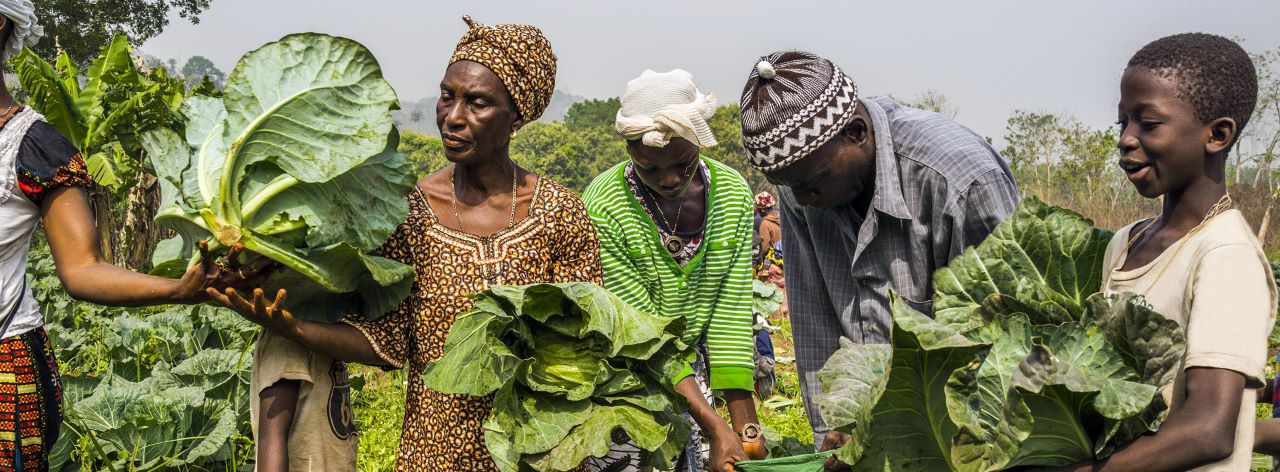Tanzania's food crisis, driven by weather extremes and economic shocks, places it in a challenging position within East Africa and Africa. While not as severe as in some neighboring countries, the ongoing vulnerabilities necessitate continued attention to mitigate the impacts of food insecurity.
Tanzania's Position in East Africa
- Acute Food Insecurity:
- Tanzania has been repeatedly listed as a country facing food crises in the Global Report on Food Crises (GRFC) for six of the past eight years. The primary drivers of these crises include extreme weather conditions, pests, and economic shocks.
- In 2023, around 1.1 million people, or 10% of the analyzed population in Tanzania, faced high levels of acute food insecurity during the lean season (October 2022 – February 2023). This figure is expected to slightly decrease to 0.9 million people, or 13% of the analyzed population, by early 2024.
- Drivers of Food Insecurity:
- Weather Extremes: Below-average rainfall during key growing periods, such as the February–May 2023 Masika growing period, coupled with prolonged dry spells and pest outbreaks, significantly impacted crop production. Up to 70% of cropland in certain areas was affected by drought.
- Economic Shocks: High fertilizer costs and other economic pressures reduced agricultural yields. In March 2023, food inflation in Tanzania reached 9.7%, though it had decreased to 4.5% by October 2023.
- Comparison with Other East African Countries:
- Tanzania's food crisis situation is less severe than in some other East African nations. For example, Sudan had around 20.3 million people (42% of the population) facing high levels of acute food insecurity in 2023, largely driven by conflict.
- Compared to other countries like South Sudan and Somalia, Tanzania's food insecurity levels are relatively moderate, though still concerning. South Sudan, for instance, had 63% of its population experiencing high levels of acute food insecurity in 2023.
Tanzania's Position in Africa
- Regional Vulnerabilities:
- Tanzania, like many other African nations, is highly susceptible to erratic weather patterns, such as droughts and floods, which severely disrupt agricultural practices and contribute to food scarcity. The country is among those with high vulnerability scores, indicating limited capacity to cope with disasters.
- Despite these challenges, Tanzania has not reached the catastrophic levels of food insecurity seen in other parts of Africa, such as in regions affected by conflict like the Sudan and Somalia.
- Agricultural and Economic Factors:
- Agriculture is a critical sector in Tanzania, employing a significant portion of the population. However, economic shocks, including rising input costs and inflation, have constrained agricultural productivity and food access.
Tanzania's ongoing food crisis has several implications for its economic development
The ongoing food crises in Tanzania highlight significant challenges to economic development. Addressing these crises is crucial for enhancing agricultural productivity, stabilizing the economy, improving human capital, and attracting investment, all of which are essential for sustainable economic growth and development in the country.
Impact on Agricultural Productivity
- Agriculture as a Key Sector: Agriculture is a cornerstone of Tanzania's economy, contributing significantly to GDP and employing a large portion of the population. However, the recurrent food crises, driven by factors like drought, floods, and pests, severely impact agricultural productivity. When agricultural yields decline, it not only threatens food security but also reduces income for farmers, exacerbating poverty and limiting economic growth.
- Economic Shocks and Input Costs: The high costs of agricultural inputs, such as fertilizers, have been a significant barrier to productivity. These costs, combined with inflation, reduce farmers' ability to invest in their crops, leading to lower yields and a decline in overall agricultural output. This situation limits the potential for agricultural exports, a crucial source of foreign exchange for the country.
Inflation and Food Prices
- Rising Food Prices: The food crises contribute to rising food prices, which directly affect household purchasing power. As food prices increase, more households struggle to afford basic necessities, leading to higher rates of poverty and malnutrition. This, in turn, reduces the potential for a healthy and productive workforce, which is essential for sustained economic growth.
- Economic Stability: High inflation rates, particularly in food prices, can destabilize the economy by increasing the cost of living and reducing consumer spending. This inflationary pressure can lead to social unrest and increased demand for government intervention, straining public resources and potentially diverting funds from long-term developmental projects.
Human Capital Development
- Malnutrition and Workforce Productivity: Persistent food insecurity and malnutrition, particularly among children and women, have long-term implications for human capital development. Malnutrition can lead to stunted growth, reduced cognitive development, and increased susceptibility to disease, all of which impair the future productivity of the workforce.
- Education and Health: Food insecurity often forces households to prioritize immediate survival over long-term investments in education and health. This results in lower school attendance rates and poorer health outcomes, which undermine efforts to develop a skilled and healthy workforce capable of driving economic growth.
Investment and Economic Growth
- Attracting Investment: Persistent food crises can deter both domestic and foreign investment. Investors may perceive the ongoing food insecurity as a sign of broader economic instability, leading to reduced investment in key sectors like agriculture, manufacturing, and services. This can slow down economic diversification and limit opportunities for job creation.
- Government Spending: The need to address food crises often requires significant government spending on emergency relief and social protection programs. This spending, while necessary, can strain public finances and reduce the funds available for infrastructure development, education, and other critical areas that are essential for long-term economic growth.
Sustainable Development Goals (SDGs)
- Challenges in Meeting SDGs: Tanzania's food crisis poses challenges to achieving several Sustainable Development Goals (SDGs), particularly SDG 2 (Zero Hunger), SDG 1 (No Poverty), and SDG 8 (Decent Work and Economic Growth). The recurrent nature of food crises makes it difficult to make progress on these goals, potentially slowing down overall development.
